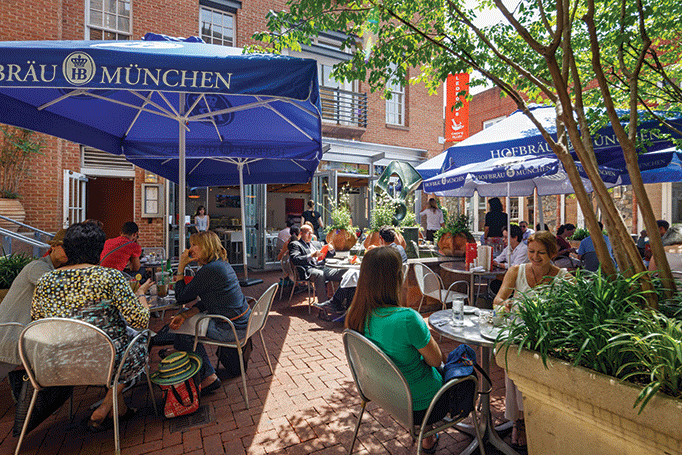
Not even the best brains in the business can predict how gainfully brick-and-mortar and online stores will be able to integrate in coming years. But this has not kept one fashion-forward shopping center from testing its own hybrid formula. Cady’s Alley — a 120,000-square-foot retail-residential redevelopment in the heart of Washington’s Georgetown design district — is not only home to an array of designer brands and their showrooms, it is fast becoming a testing ground for some online retailers and even a permanent home for some others.
When a furniture tenant relinquished 8,000 square feet last year, the shopping center’s management split the space into five parts and created a pop-up incubator for online fashion sellers during the approaching holidays. A brick-and-mortar space in the busiest season of the year could be a strategic way for online retailers to build brand recognition, notes Philippe Lanier, head of asset management for shopping center developer EastBanc. The two-months-plus test, which brought in such online sellers as Read Wall, Tuckernuck, Victoria Road and Zestt, was received well enough, but sales results were mixed, mostly for want of scale. “The challenge was the size of the startup organization relative to the effort,” said Lanier, who engineered the idea. “We were told this would really be great if we were doing it in New York.”
But Lanier is undaunted. Other exclusive pop-ups will be surfacing at Cady’s Alley in the coming weeks, and some predominantly e-commerce businesses are taking permanent spaces. These include Rent the Runway, a rental hub for luxury designer fashions; and fast-rising menswear seller Bonobos, which has opened one of its Guideshops there — a physical space that stocks no merchandise, but where the customer can discuss the clothing lines with an adviser and order on-site or online.
This will be the first stand-alone store in Washington for Rent the Runway, which describes itself as a “fashion company with a technology soul.” Other haute businesses at Cady’s Alley include a Design Within Reach furniture showroom, studio spaces for German-based kitchen designer Poggenpohl and U.S.-based kitchen-bathroom designer Waterworks, and the district’s first Steven Alan clothing store.
EastBanc and partner Jamestown Properties have been supportive of Lanier’s efforts to mesh online operations with physical spaces. Still in flux are leases, staffing and storage variables, and ways to best split a space between a brand’s “experience” elements and its product side.
Bonobos was signed to three single-year deals followed by a two-year lease and a five-year option to give it the sort of flexibility such burgeoning retailers are seeking, Lanier says. Bonobos has opened Guideshops in Boston; Chicago; New York City; San Francisco; and Palo Alto, Calif. Purchases made after visiting one of these tend to be about double the typical Bonobos online order, the company says.
“It’s just a fact that spending habits are adapting to shopping online, but there’s no way that we as landlords can predict just how all this is going to turn out,” said Lanier. “That doesn’t keep us from serving as an urban alchemist to help determine that.”


